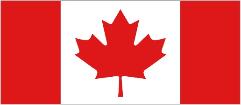Copyright 2012.
All rights reserved.
All rights reserved.

Entering Canada
What Will Adults Need to Enter Canada?
1. If you are a United States citizen, you do not need a passport to enter Canada; however, you should
carry proof of your U.S. citizenship, such as a birth certificate, a certificate of citizenship or naturalization,
or a Certificate of Indian Status, or a Passport will also work.
2. You will also need to have photo identification.
Special Important Information for Children Entering Canada
1. All minors need to have identification, which would be a birth certificate, Passport, citizenship card,
permanent resident card, or Certificate of Indian Status. A more detailed examination will be conducted
for minors entering Canada without proper identification, or those traveling in the company of adults other
than their parents or legal guardian(s). This additional scrutiny helps ensure the safety of the children.
2. Minor children traveling alone must have proof of citizenship. We also strongly recommend that the
children carry a letter from both parents (if applicable) that authorizes the person meeting them to take
care of them while they are in Canada. The letter should include the length of the stay and the address
and telephone numbers of the parents.
3. If you are traveling with minors, you must carry proper identification for each child such as a birth
certificate, passport, citizenship card, permanent resident card or Certificate of Indian Status. If you are
not the parent or guardian of the children, you should also have written permission from the parent/guardian
authorizing the trip. The letter should include addresses and telephone numbers where the parents or
guardian can be reached.
4. Divorced or separated parents should carry custody or legal separation documents and/or a letter of
authorization to facilitate their entry into Canada. Parents who share custody of their children should carry
copies of the legal custody documents. It is also recommended that they have a consent letter from the other
custodial parent to take the child on a trip out of the country. The parents’ full name, address and telephone
number should be included in the consent letter.
5. If you are traveling with a group of vehicles, make sure you arrive at the border in the same vehicle as
your children, to avoid any confusion.
6. Canadian Customs officers watch for missing children, and may ask detailed questions about the
children who are traveling with you.
7. Canada Customs has provided a sample Consent letter for transporting minor children. This letter can
be used if children are traveling with only one parent (it gives permission for travel from the other parent),
or if children are traveling with someone who is not their parent or guardian. The sample letter can be
found at this website:
http://www.voyage.gc.ca/preparation_information/document.cms?doc=9032a3d1-03f5-4532-9cc5-404814c28319
8. For additional general information about entering Canada, such as what you can and cannot bring, what to
expect at Customs, etc., you can check this official website: http://www.cbsa.gc.ca/noncan-eng.html
